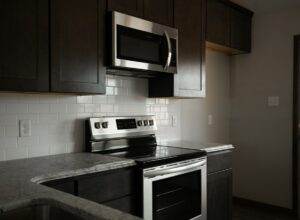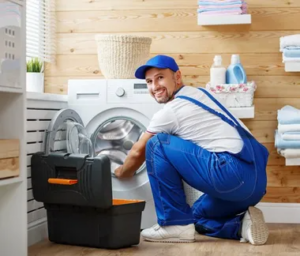Refrigerators are an essential appliance in our daily lives. They play a crucial role in preserving our food and keeping it fresh for longer periods. Without refrigerators, we would have to rely on other methods of food preservation, such as canning or drying, which are not as effective in maintaining the quality and safety of our food.
However, like any other appliance, refrigerators can experience malfunctions and breakdowns over time. It is important to address these issues promptly to ensure that your refrigerator continues to function properly. Regular maintenance and timely repairs can extend the lifespan of your refrigerator and save you from the inconvenience of a complete breakdown.
Key Takeaways
- Common signs of refrigerator malfunctioning include strange noises, warm temperatures, and leaks.
- Understanding the refrigerator cooling system involves knowing the roles of the compressor, condenser, evaporator, and refrigerant.
- Diagnosing refrigerator electrical problems requires checking the power supply, wiring, and control board.
- Identifying refrigerator compressor issues involves checking for overheating, clicking sounds, and oil leaks.
- Troubleshooting refrigerator thermostat problems involves checking the temperature settings, sensor, and control board.
Common Signs of Refrigerator Malfunctioning
There are several common signs that indicate your refrigerator may be malfunctioning. Paying attention to these signs can help you identify problems early on and take the necessary steps to fix them.
One of the most noticeable signs of a malfunctioning refrigerator is strange noises. If you hear loud or unusual sounds coming from your refrigerator, it could indicate a problem with the compressor or other components. Another sign is a warm temperature inside the refrigerator. If your food is not staying cold enough, it could be due to a faulty thermostat or a problem with the cooling system.
Frost buildup is another common issue in refrigerators. If you notice excessive frost on the walls or shelves of your refrigerator, it could be a sign of a problem with the defrost system. Water leakage is also a common problem, which can be caused by a clogged drain tube or a faulty water inlet valve. Lastly, unpleasant odors coming from your refrigerator can indicate a problem with the air circulation or a buildup of bacteria inside.
Understanding the Refrigerator Cooling System
To effectively diagnose and fix refrigerator problems, it is important to have a basic understanding of how the cooling system works. The cooling system in a refrigerator consists of several components that work together to maintain a cold temperature.
The main component of the cooling system is the compressor, which is responsible for compressing and circulating the refrigerant gas. The refrigerant gas absorbs heat from the inside of the refrigerator and releases it outside, cooling the interior. The condenser coil, located at the back or bottom of the refrigerator, helps dissipate the heat from the refrigerant.
The evaporator coil, located inside the refrigerator, is responsible for absorbing heat from the air inside and cooling it down. The evaporator fan circulates the cold air throughout the refrigerator, ensuring an even temperature distribution. The thermostat regulates the temperature by turning the compressor on and off as needed.
Diagnosing Refrigerator Electrical Problems
Electrical problems are a common issue in refrigerators and can cause various malfunctions. Some common electrical problems include a refrigerator that does not turn on, a refrigerator that keeps tripping the circuit breaker, or a refrigerator that does not cool properly.
To diagnose electrical problems in your refrigerator, start by checking the power supply. Make sure that the refrigerator is properly plugged in and that there is power coming from the outlet. If there is power, but the refrigerator still does not turn on, it could be a problem with the control board or a faulty wiring connection.
If your refrigerator keeps tripping the circuit breaker, it could be due to an overload caused by a faulty component or a short circuit. In this case, it is best to call a professional technician to inspect and repair the electrical system of your refrigerator.
Identifying Refrigerator Compressor Issues
The compressor is an essential component of the cooling system in a refrigerator. It is responsible for compressing and circulating the refrigerant gas, which is crucial for maintaining a cold temperature inside the refrigerator.
Common compressor issues include a compressor that does not turn on, a compressor that runs continuously, or a compressor that makes loud noises. If your compressor does not turn on, it could be due to a faulty start relay or a problem with the electrical connections. If the compressor runs continuously, it could be a sign of a refrigerant leak or a faulty thermostat.
Loud noises coming from the compressor can indicate a problem with the motor or the internal components. If you suspect a compressor issue, it is best to call a professional technician to diagnose and repair the problem, as working with the compressor can be dangerous and requires specialized knowledge.
Troubleshooting Refrigerator Thermostat Problems

The thermostat plays a crucial role in regulating the temperature inside your refrigerator. It senses the temperature and signals the compressor to turn on or off as needed to maintain the desired temperature.
Common thermostat problems include a refrigerator that is too cold or too warm, or a refrigerator that does not turn on at all. If your refrigerator is too cold, it could be due to a faulty thermostat that is not accurately sensing the temperature. On the other hand, if your refrigerator is too warm, it could be due to a thermostat that is not signaling the compressor to turn on.
To troubleshoot thermostat problems, start by checking the temperature settings. Make sure that the thermostat is set to the desired temperature and that it is functioning properly. If you suspect a problem with the thermostat, it is best to call a professional technician to diagnose and repair the issue.
Fixing Leaking Refrigerator Water Dispenser
Water dispenser leaks are a common problem in refrigerators with built-in water dispensers. There are several common causes of water dispenser leaks, including a clogged water line, a faulty water inlet valve, or a cracked water reservoir.
To fix water dispenser leaks, start by inspecting the water line for any clogs or blockages. If you find any, clear them using a small brush or pipe cleaner. If the water line is clear, check the water inlet valve for any signs of damage or malfunction. If the valve is faulty, it will need to be replaced.
If you notice a crack in the water reservoir, it will also need to be replaced. It is best to call a professional technician to diagnose and repair water dispenser leaks, as they require specialized knowledge and tools.
Resolving Refrigerator Ice Maker Problems
Ice maker problems are another common issue in refrigerators. Some common ice maker problems include a slow ice production, ice cubes that are too small or misshapen, or an ice maker that does not work at all.
To troubleshoot ice maker problems, start by checking the water supply. Make sure that the water line is properly connected and that there is sufficient water pressure. If the water supply is fine, check the water inlet valve for any signs of damage or malfunction.
If the ice cubes are too small or misshapen, it could be due to a problem with the water inlet valve or a clogged water line. If the ice maker does not work at all, it could be due to a faulty motor or a problem with the electrical connections. In these cases, it is best to call a professional technician to diagnose and repair the issue.
Addressing Refrigerator Freezing Food Issues
One common problem in refrigerators is food freezing in certain areas. This can be frustrating and can lead to food spoilage and waste. There are several common causes of food freezing in the refrigerator, including a faulty thermostat, a blocked air vent, or improper placement of food items.
To fix food freezing issues, start by checking the temperature settings. Make sure that the thermostat is set to the correct temperature and that it is functioning properly. If the temperature settings are correct, check the air vents for any blockages. Clear any blockages using a small brush or vacuum cleaner.
If you notice that certain areas of your refrigerator are colder than others, it could be due to improper placement of food items. Make sure that there is enough space between the food items and that they are not blocking the air vents. If you continue to experience food freezing issues, it is best to call a professional technician to diagnose and repair the problem.
Fixing Refrigerator Door Seal Problems
The door seal, also known as the gasket, plays a crucial role in maintaining the temperature inside your refrigerator. It creates an airtight seal when the door is closed, preventing warm air from entering and cold air from escaping.
Common door seal problems include a door that does not close properly, a door that is difficult to open, or a door that has cracks or tears in the seal. If your door does not close properly, it could be due to a misaligned hinge or a worn-out door seal. If your door is difficult to open, it could be due to a buildup of dirt or debris on the seal.
If you notice cracks or tears in the door seal, it will need to be replaced. To fix door seal problems, start by cleaning the seal with warm soapy water and a soft cloth. Make sure that there is no dirt or debris on the seal that could prevent it from creating an airtight seal. If the problem persists, it is best to call a professional technician to replace the door seal.
Maintaining Your Refrigerator for Optimal Performance
Regular maintenance is key to keeping your refrigerator running smoothly and efficiently. Here are some tips for maintaining your refrigerator:
1. Clean the condenser coils: The condenser coils can accumulate dust and debris over time, which can reduce their efficiency. Clean the coils at least once a year using a vacuum cleaner or a brush.
2. Check the door seals: Inspect the door seals regularly for any signs of damage or wear. Replace them if necessary to ensure an airtight seal.
3. Keep the refrigerator clean: Regularly clean the interior of your refrigerator to prevent the buildup of dirt, bacteria, and odors. Use warm soapy water and a soft cloth to clean the shelves, drawers, and walls.
4. Avoid overloading the refrigerator: Overloading the refrigerator can restrict airflow and reduce its cooling efficiency. Make sure to leave enough space between food items for proper air circulation.
5. Check the temperature settings: Regularly check the temperature settings to ensure that your refrigerator is maintaining the desired temperature. Adjust the settings if necessary.
6. Defrost the freezer: If you have a manual defrost freezer, make sure to defrost it regularly to prevent frost buildup and maintain its efficiency.
In conclusion, maintaining and repairing your refrigerator is essential for its optimal performance and longevity. By paying attention to common signs of malfunctioning, understanding the cooling system, and troubleshooting common problems, you can address issues promptly and prevent further damage.
Regular maintenance, such as cleaning the condenser coils and checking the door seals, can help prevent future problems and extend the lifespan of your refrigerator. However, if you are unsure or uncomfortable with diagnosing or repairing refrigerator issues, it is always best to seek professional help. A qualified technician can accurately diagnose and repair any problems with your refrigerator, ensuring that it continues to function properly for years to come.
If you’re looking for more information on diagnosing and fixing refrigerator issues, be sure to check out the related article on 911 Appliance’s blog. This article provides helpful tips and step-by-step instructions on troubleshooting common refrigerator problems. Whether you’re dealing with a fridge that’s not cooling properly, a noisy compressor, or a leaking water dispenser, this article has got you covered. Don’t miss out on this valuable resource – click here to read the full article.
What are the common safety measures to consider when diagnosing and fixing refrigerator issues?
When diagnosing and fixing refrigerator issues, it’s crucial to prioritize safety measures for troubleshooting. Always unplug the appliance before beginning any repairs. Use insulated tools to avoid electrical shock. Wear protective gloves and goggles when handling sharp or potentially hazardous components. Safety should always come first. Additionally, ensure that the workspace is well-lit and free of clutter to prevent accidents. As you proceed with troubleshooting refrigerator cooling issues, take your time and meticulously document any changes you make for future reference. Remember, if a problem persists despite your efforts, it’s best to consult a professional technician for assistance.



